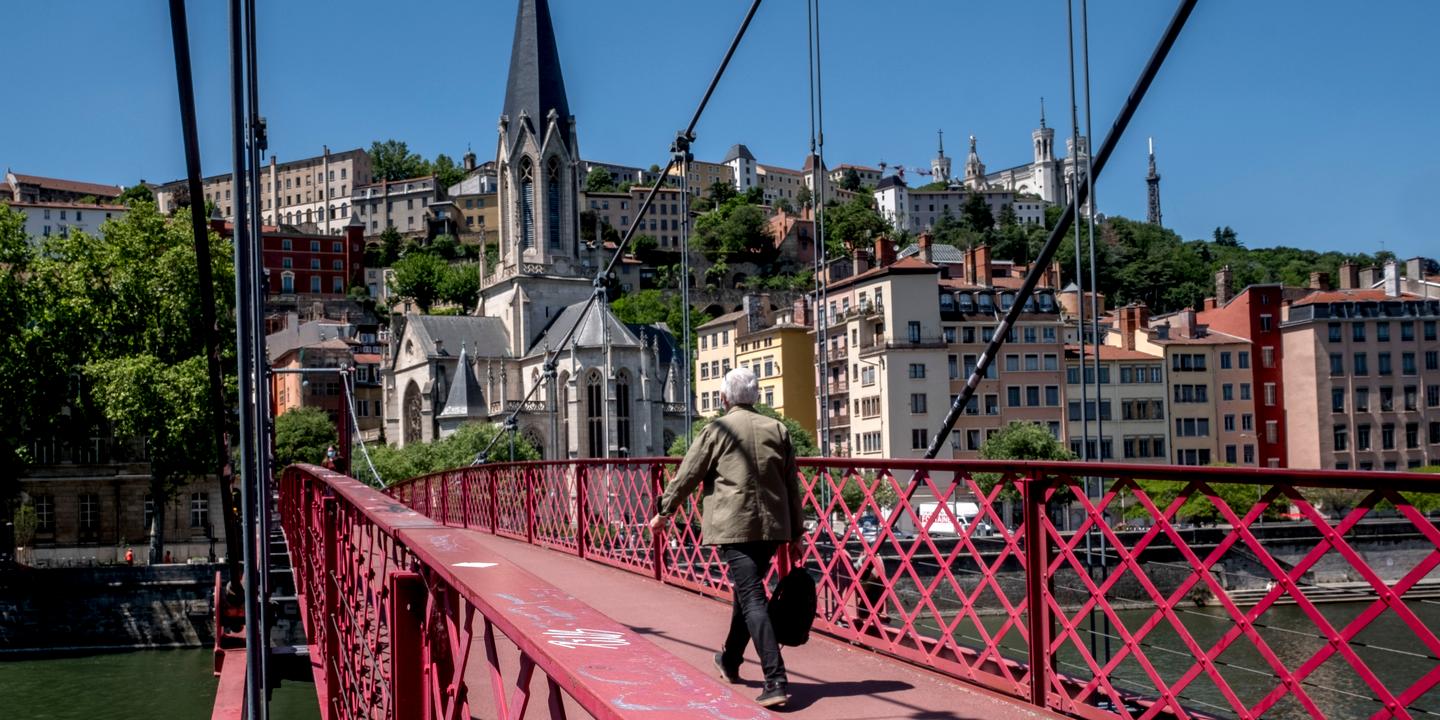ReportagePresident of the Lumière Institute for 29 years, the filmmaker born in Lyon had a gentle gaze on his city, the setting for several of his films. From the Monplaisir district to the banks of the Rhône, from Saint-Paul to Confluences, stroll in the footsteps of Bertrand Tavernier.
–
Three large black and white portraits pay homage to him on the walls of the Institut Lumière. Chin in hand, Bertrand Tavernier launches his sympathetic owl gaze towards the clusters of young people lying on the lawns of the Lyon film library which he chaired until his death on March 25. In a few moments, Thierry Frémaux, the director, will welcome the first spectators back from confinement with an evocation of his elder brother and friend. But this sunny May 20 has summer airs in the park nestled between the convoluted house that Antoine Lumière had built at the end of the 19th century.e century and the projection room all in glass and clear concrete.

On the square, in front of the imposing villa with glazed tiles that the locals call “Le château Lumière”, the boules players joke at the foot of the last bandstand in Lyon while the customers prolong their lunches on the terraces. This could be the title of one of his films: Life and nothing else.
We climb endless stairs to assault the hills of Fourvière and Croix-Rousse to find, around a public garden, the wide shots he loved.
Bertrand Tavernier, who had left his hometown at the age of 5 without ever ceasing to return there, was a bit at home in this Monplaisir district, a few streets of which cultivate the “village spirit”. It is thanks to him and the teams of the Lumière Institute that foreign visitors venture to this “Rue du Premier Film” where a museum keeps alive the memory of the invention of the cinematograph in 1895.
On the “filmmakers’ wall”, they decipher the engraved names of the directors who came for the Lumière Festival which, for twelve years, has invited the world’s top performers and the entire city to commune around the seventh art. Nine days in October, during which Bertrand Tavernier ran from one cinema to another to present, enthusiastic and laughing, a film “Quite formidable! “ or tell the anecdotes “Admirable enough” of a history of cinema that he knew by heart. On stage alongside Quentin Tarantino, Martin Scorsese or Claudia Cardinale, he embodied this gourmet and unprepared party, in the image of the city.

Of course she has changed a lot since then The Watchmaker of Saint-Paul, shot in 1973 in Vieux Lyon. The rue de la Loge where Philippe Noiret used to shop has rediscovered its colors, like all this cobblestone interlacing which reveals Florentine ochres. The columns of the old neighboring courthouse are no longer black with soot, just like the cathedral where Philippe Noiret seemed to be watching for a sign from the sky when it was only the hour spelled out by the automatons of the ancient astronomical clock. Urban legend has it that this film convinced the elected officials of the time not to massacre the few hectares of the Middle Ages and Renaissance, which have since been classified as Unesco heritage.
You have 67.33% of this article left to read. The rest is for subscribers only.
–

:quality(80)/cdn-kiosk-api.telegraaf.nl/43abe1a2-cabb-11eb-9807-02d2fb1aa1d7.jpg)
:quality(80)/cdn-kiosk-api.telegraaf.nl/90704434-cad8-11eb-a5ca-0218eaf05005.jpg)